Portraits Of Life Quotes & Sayings
Enjoy reading and share 30 famous quotes about Portraits Of Life with everyone.
Top Portraits Of Life Quotes
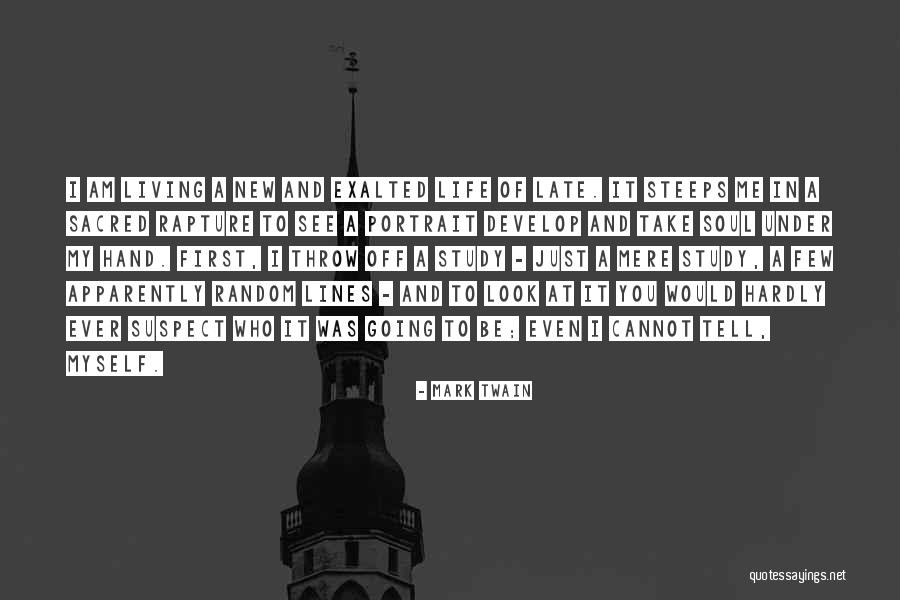
I am living a new and exalted life of late. It steeps me in a sacred rapture to see a portrait develop and take soul under my hand. First, I throw off a study - just a mere study, a few apparently random lines - and to look at it you would hardly ever suspect who it was going to be; even I cannot tell, myself. — Mark Twain
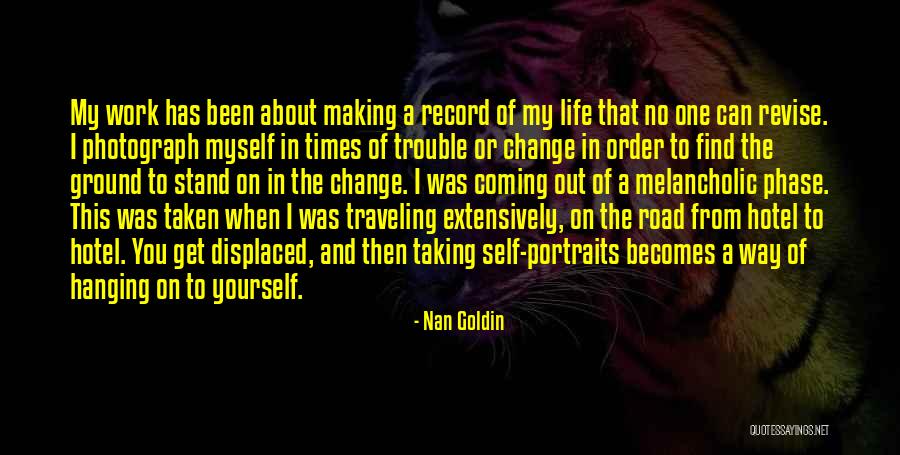
My work has been about making a record of my life that no one can revise. I photograph myself in times of trouble or change in order to find the ground to stand on in the change. I was coming out of a melancholic phase. This was taken when I was traveling extensively, on the road from hotel to hotel. You get displaced, and then taking self-portraits becomes a way of hanging on to yourself. — Nan Goldin
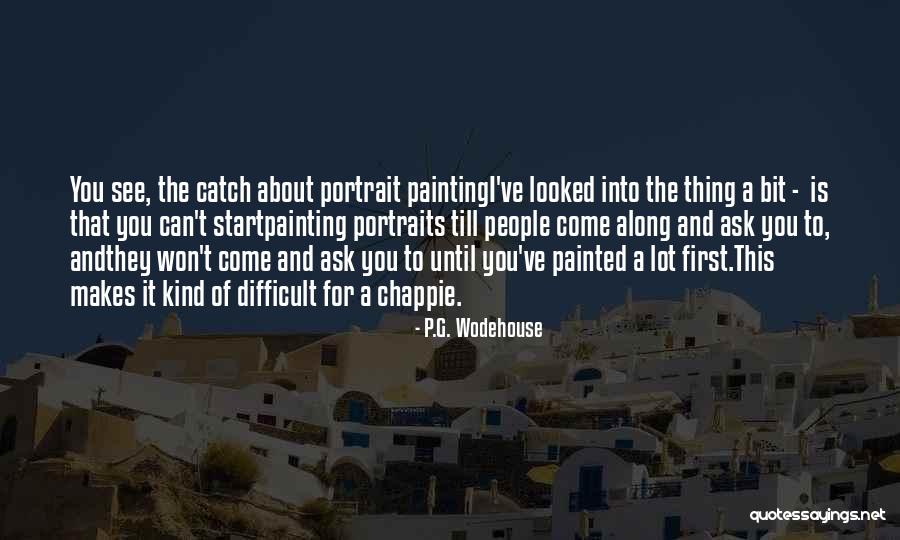
You see, the catch about portrait painting
I've looked into the thing a bit - is that you can't start
painting portraits till people come along and ask you to, and
they won't come and ask you to until you've painted a lot first.
This makes it kind of difficult for a chappie. — P.G. Wodehouse
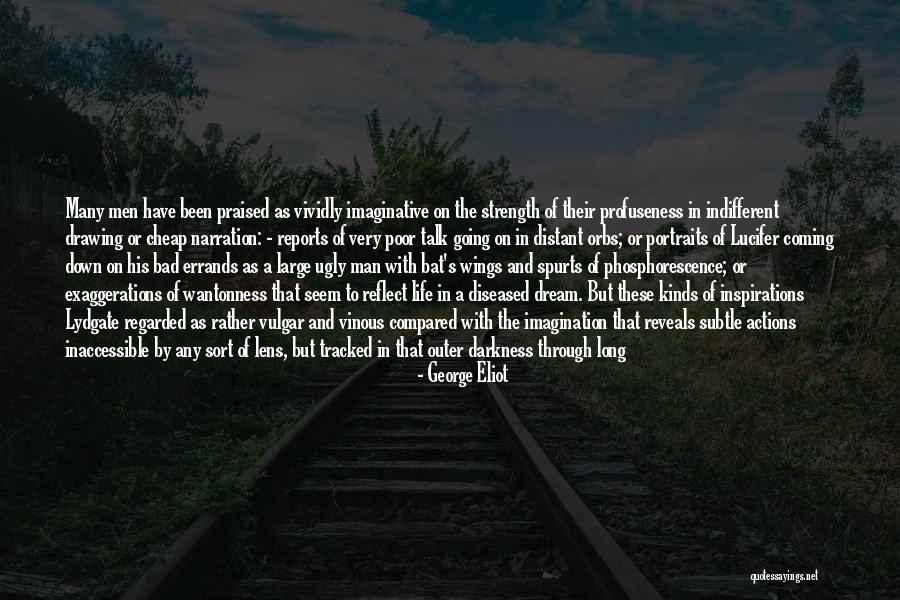
Many men have been praised as vividly imaginative on the strength of their profuseness in indifferent drawing or cheap narration: - reports of very poor talk going on in distant orbs; or portraits of Lucifer coming down on his bad errands as a large ugly man with bat's wings and spurts of phosphorescence; or exaggerations of wantonness that seem to reflect life in a diseased dream. But these kinds of inspirations Lydgate regarded as rather vulgar and vinous compared with the imagination that reveals subtle actions inaccessible by any sort of lens, but tracked in that outer darkness through long pathways of necessary sequence by the inward light which is the last refinement of Energy, capable of bathing even the ethereal atoms in its ideally illuminated space. — George Eliot
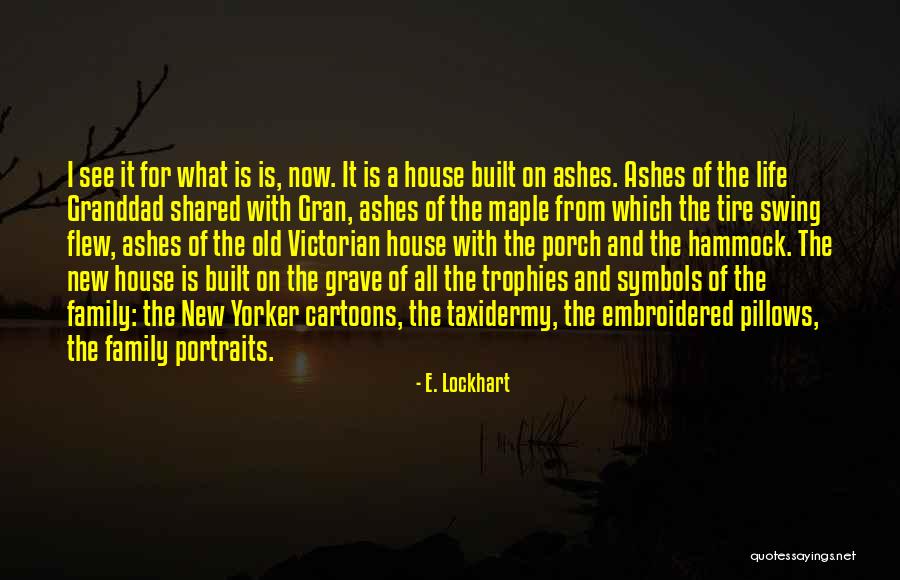
I see it for what is is, now. It is a house built on ashes. Ashes of the life Granddad shared with Gran, ashes of the maple from which the tire swing flew, ashes of the old Victorian house with the porch and the hammock. The new house is built on the grave of all the trophies and symbols of the family: the New Yorker cartoons, the taxidermy, the embroidered pillows, the family portraits. — E. Lockhart

I hate to paint portraits! I hope never to paint another portrait in my life. Portraiture may be all right for a man in his youth, but after forty I believe that manual dexterity deserts one, and, besides, the color-sense is less acute. Youth can better stand the exactions of a personal kind that are inseparable from portraiture. I have had enough of it. — John Singer Sargent

As though one's life were a series of galleries in which all the portraits of any one period had a marked family likeness, the same (so to speak) tonality - this early Swann abounding in leisure, fragrant with the scent of the great chestnut-tree, of baskets of raspberries and of a sprig of tarragon. — Marcel Proust

Peg came over with dinner tonight and told me about this dumb schmaltzy poem she heard someone read at an AA meeting. It got me thinking. It was about how while we are on earth, our limitations are such that we can only see the underside of the tapestry that God is weaving. God sees the topside, the whole evolving portrait and its amazing beauty, and uses us as the pieces of thread to weave the picture. We see the glorious colors and shadings, but we also see the knots and the threads hanging down, the think lumpy patches, the tangles. But God and the people in heaven with him see how beautiful the portraits in the tapestry are. The poem says in this flowery way that faith is about the willingness to be used by God wherever and however he most needs you, most needs the piece of thread that is your life. You give him your life to put through his needle, to use as he sees fit. — Anne Lamott
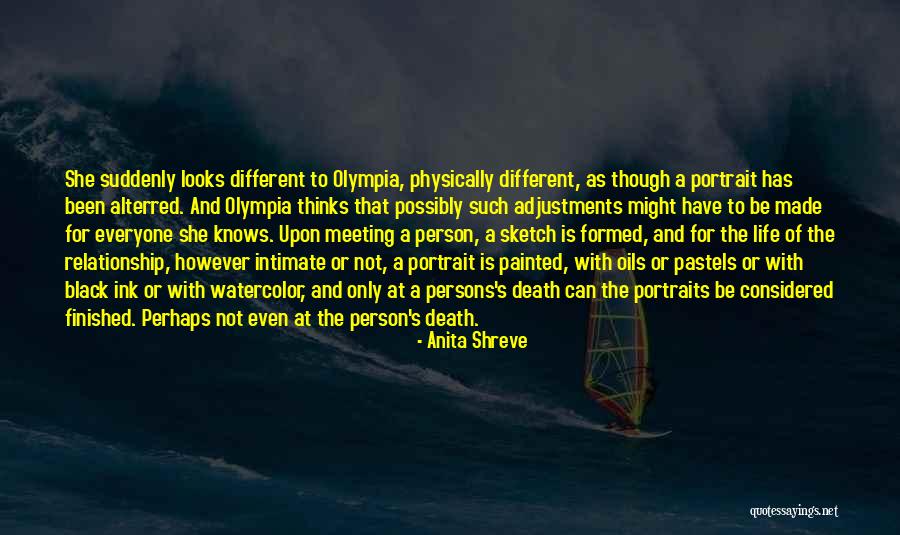
She suddenly looks different to Olympia, physically different, as though a portrait has been alterred. And Olympia thinks that possibly such adjustments might have to be made for everyone she knows. Upon meeting a person, a sketch is formed, and for the life of the relationship, however intimate or not, a portrait is painted, with oils or pastels or with black ink or with watercolor, and only at a persons's death can the portraits be considered finished. Perhaps not even at the person's death. — Anita Shreve
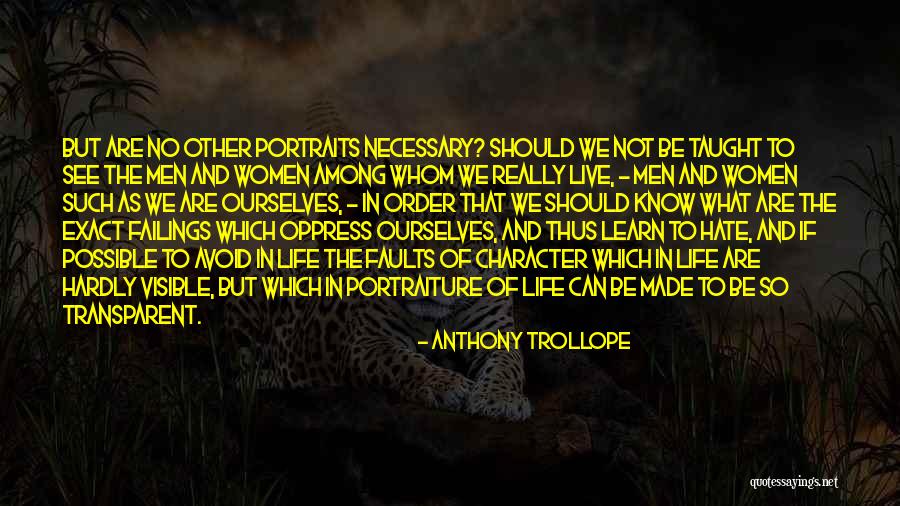
But are no other portraits necessary? Should we not be taught to see the men and women among whom we really live, - men and women such as we are ourselves, - in order that we should know what are the exact failings which oppress ourselves, and thus learn to hate, and if possible to avoid in life the faults of character which in life are hardly visible, but which in portraiture of life can be made to be so transparent. — Anthony Trollope

Boast of Quietness
Writings of light assault the darkness, more prodigious than meteors.
The tall unknowable city takes over the countryside.
Sure of my life and death, I observe the ambitious
and would like to understand them.
Their day is greedy as a lariat in the air.
Their night is a rest from the rage within steel, quick to attack.
They speak of humanity.
My humanity is in feeling we are all voices of the same poverty.
They speak of homeland.
My homeland is the rhythm of a guitar, a few portraits, an old sword,
the willow grove's visible prayer as evening falls.
Time is living me.
More silent than my shadow, I pass through the loftily covetous multitude.
They are indispensable, singular, worthy of tomorrow.
My name is someone and anyone.
I walk slowly, like one who comes from so far away
he doesn't expect to arrive. — Jorge Luis Borges

Portraits of Integrity is sure to be a favorite with your family! It contains 45 stories of real people from history who, in the course of their lives, have been placed in situations where their character shone through. History is best remembered when learned through the stories of those who lived it! For many years, I have given to parents a list of 45 character qualities with Scripture verses to learn what God's Word says about each one. Principles are best learned from practical examples and that is what has given birth to this book. Through the lives of people, some of whom you have heard of and some you will be meeting for the first time, you will learn how to appreciate character in the lives of others and be inspired to become people of character yourselves. I hope you will be challenged as I have to learn of people who, often at great sacrifice, strove to fulfill their responsibilities in life and as a result left to us a legacy of character! — Marilyn Boyer

To stroll is a science, it is the gastronomy of the eye. To walk is to vegetate, to stroll is to live ... To stroll is to enjoy, it is to assume a mind-set, it is to admire the sublime pictures of unhappiness, of love, of joy, of graceful or grotesque portraits; it is to plunge one's vision to the depths of a thousand existences: young, it is to desire everything; old, it is to live the life of the young, to marry their passions. — Honore De Balzac

From the mingled strength of shade and light A new creation rises to my sight, Such heav'nly figures from his pencil flow, So warm with light his blended colors glow ... The glowing portraits, fresh from life, that bring Home to our hearts the truth from which they spring. — Lord Byron
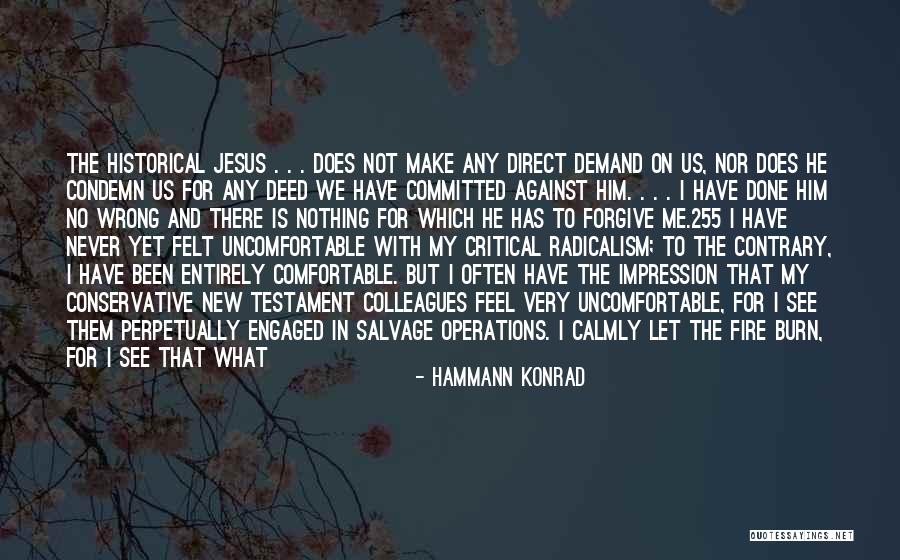
The historical Jesus . . . does not make any direct demand on us, nor does he condemn us for any deed we have committed against him. . . . I have done him no wrong and there is nothing for which he has to forgive me.255 I have never yet felt uncomfortable with my critical radicalism; to the contrary, I have been entirely comfortable. But I often have the impression that my conservative New Testament colleagues feel very uncomfortable, for I see them perpetually engaged in salvage operations. I calmly let the fire burn, for I see that what is consumed is only the fanciful portraits found in life-of-Jesus theology, and that is precisely the Christos kata sarka [Christ according to the flesh]. But the Christos kata sarka is no concern of ours. How things looked in the heart of Jesus I do not know and do not want to know.256 — Hammann Konrad
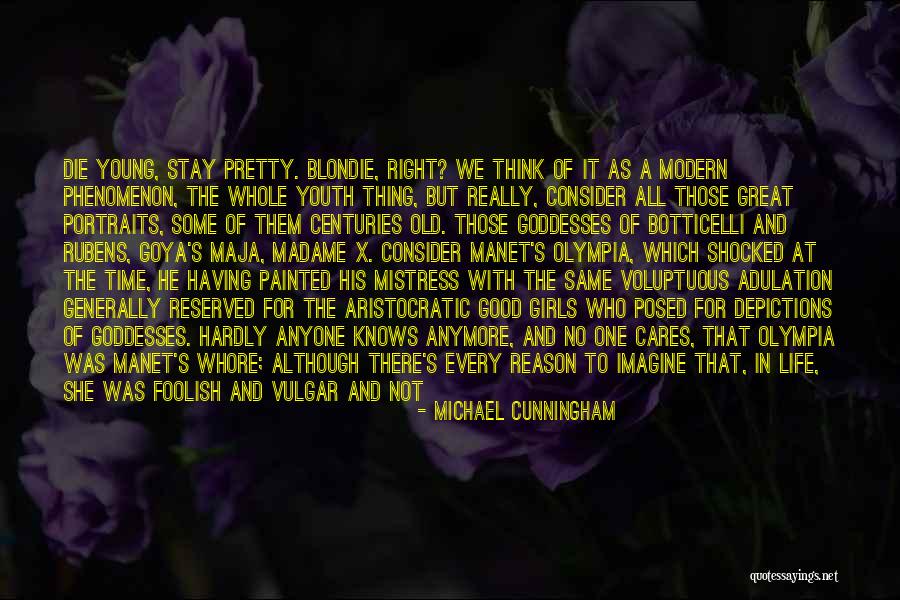
Die young, stay pretty. Blondie, right? We think of it as a modern phenomenon, the whole youth thing, but really, consider all those great portraits, some of them centuries old. Those goddesses of Botticelli and Rubens, Goya's Maja, Madame X. Consider Manet's Olympia, which shocked at the time, he having painted his mistress with the same voluptuous adulation generally reserved for the aristocratic good girls who posed for depictions of goddesses. Hardly anyone knows anymore, and no one cares, that Olympia was Manet's whore; although there's every reason to imagine that, in life, she was foolish and vulgar and not entirely hygienic (Paris in the 1860s being what it was). She's immortal now, she's a great historic beauty, having been scrubbed clean by the attention of a great artist. And okay, we can't help but notice that Manet did not choose to paint her twenty years later, when time had started doing its work. The world has always worshipped nascence. Goddamn the world. — Michael Cunningham

this early Swann in whom I can distinguish the charming mistakes of my childhood, and who, incidentally, is less like his successor than he is like the other people I knew at that time, as though one's life were a series of galleries in which all the portraits of any one period had a marked family likeness, the same (so to speak) tonality — Marcel Proust
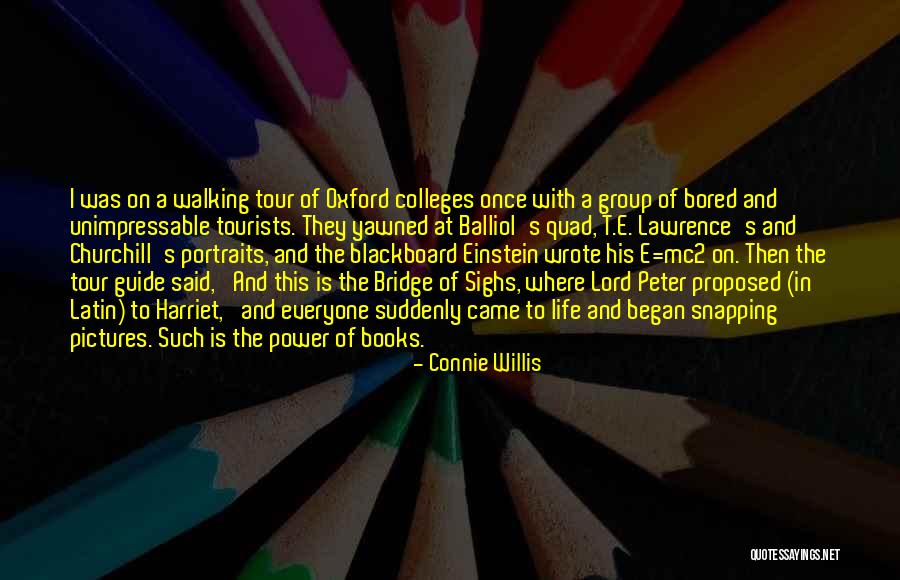
I was on a walking tour of Oxford colleges once with a group of bored and unimpressable tourists. They yawned at Balliol's quad, T.E. Lawrence's and Churchill's portraits, and the blackboard Einstein wrote his E=mc2 on. Then the tour guide said, 'And this is the Bridge of Sighs, where Lord Peter proposed (in Latin) to Harriet,' and everyone suddenly came to life and began snapping pictures. Such is the power of books. — Connie Willis
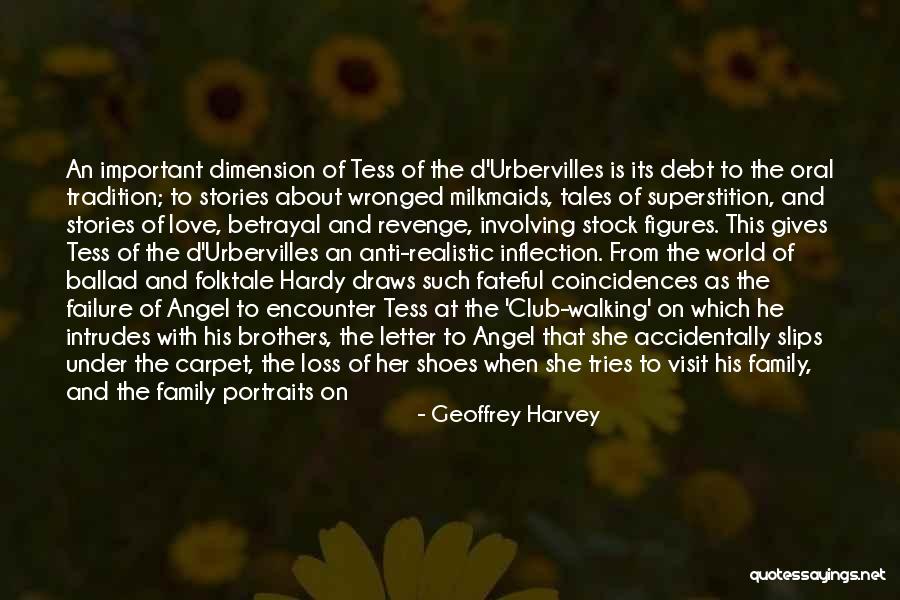
An important dimension of Tess of the d'Urbervilles is its debt to the oral tradition; to stories about wronged milkmaids, tales of superstition, and stories of love, betrayal and revenge, involving stock figures. This gives Tess of the d'Urbervilles an anti-realistic inflection. From the world of ballad and folktale Hardy draws such fateful coincidences as the failure of Angel to encounter Tess at the 'Club-walking' on which he intrudes with his brothers, the letter to Angel that she accidentally slips under the carpet, the loss of her shoes when she tries to visit his family, and the family portraits on the wall of their honeymoon dwelling, as well as several omens. This chimes effectively with a world in which the rural folk have a superstitious and fatalistic attitude to life. — Geoffrey Harvey
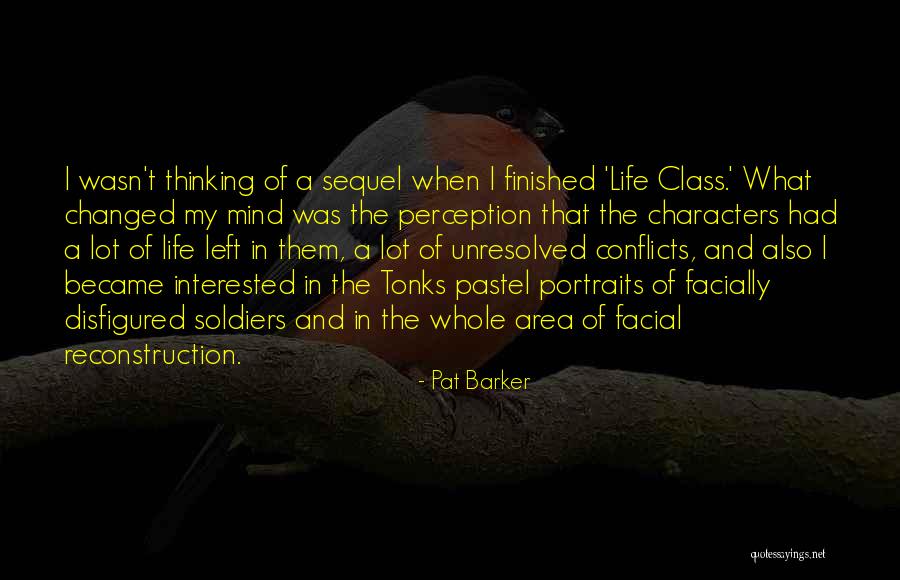
I wasn't thinking of a sequel when I finished 'Life Class.' What changed my mind was the perception that the characters had a lot of life left in them, a lot of unresolved conflicts, and also I became interested in the Tonks pastel portraits of facially disfigured soldiers and in the whole area of facial reconstruction. — Pat Barker
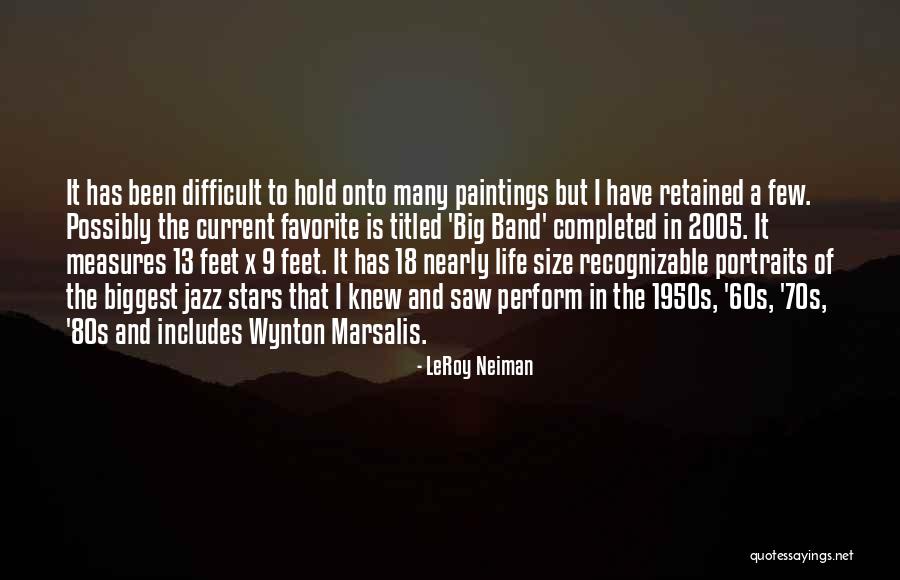
It has been difficult to hold onto many paintings but I have retained a few. Possibly the current favorite is titled 'Big Band' completed in 2005. It measures 13 feet x 9 feet. It has 18 nearly life size recognizable portraits of the biggest jazz stars that I knew and saw perform in the 1950s, '60s, '70s, '80s and includes Wynton Marsalis. — LeRoy Neiman
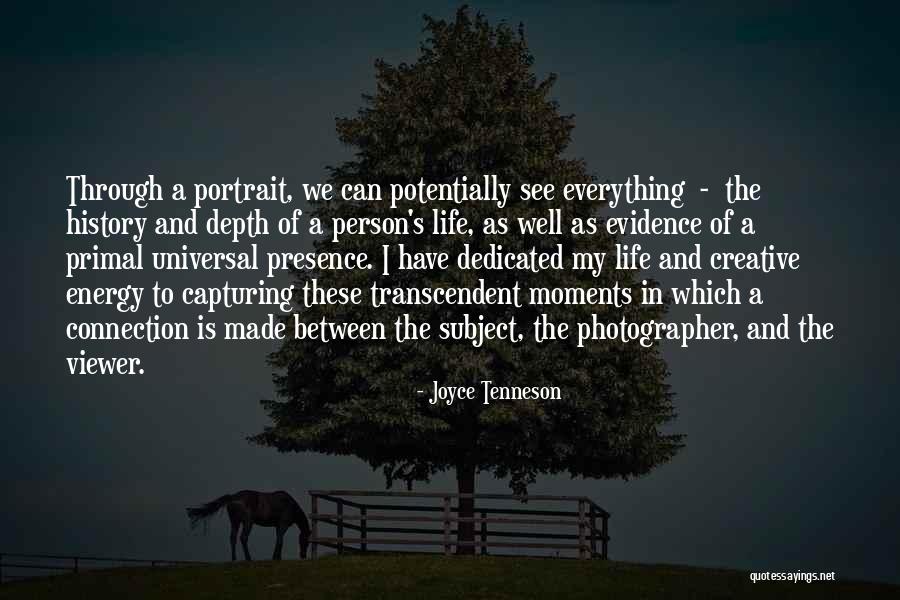
Through a portrait, we can potentially see everything - the history and depth of a person's life, as well as evidence of a primal universal presence. I have dedicated my life and creative energy to capturing these transcendent moments in which a connection is made between the subject, the photographer, and the viewer. — Joyce Tenneson
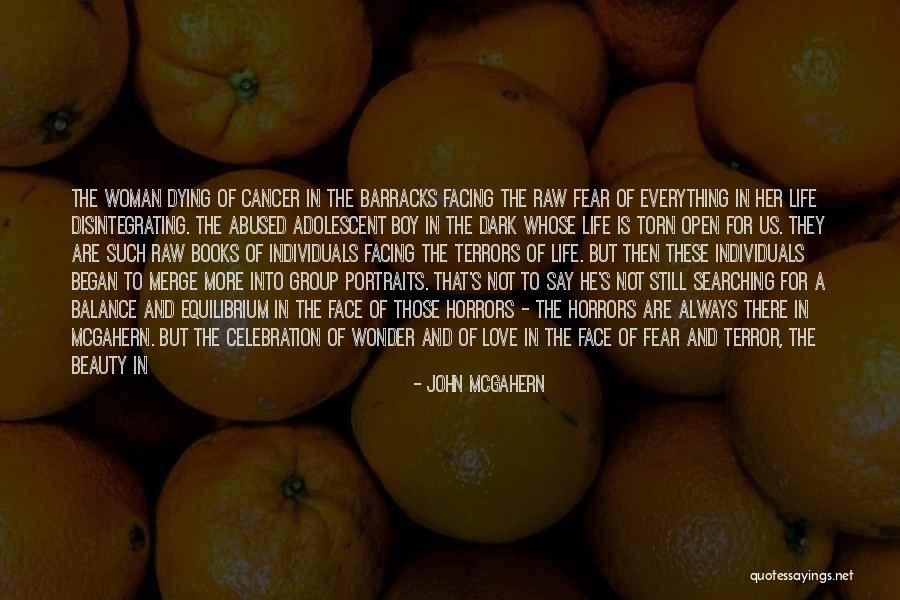
The woman dying of cancer in The Barracks facing the raw fear of everything in her life disintegrating. The abused adolescent boy in The Dark whose life is torn open for us. They are such raw books of individuals facing the terrors of life. But then these individuals began to merge more into group portraits. That's not to say he's not still searching for a balance and equilibrium in the face of those horrors - the horrors are always there in McGahern. But the celebration of wonder and of love in the face of fear and terror, the beauty in simple things, become his central preoccupation. He starts to celebrate communal bonds in a way he didn't do at all in the beginning. — John McGahern

People have rituals for communing with the dead, rituals that depend more on the idiosyncrasies of the individual than on the influence of culture. Some visit gravesites. Some talk to portraits, or mantelpiece urns. Some go to spots favored by the deceased during life, or mouth silent prayers in houses of worship, or have trees planted in memory in some far-off land. The common denominator, of course, is a sense beyond logic that the dead are aware of all this, that they can hear the prayers and witness the deeds and feel the ongoing love and longing. People seem to find that sense comforting. I don't believe any of it. I've never seen a soul depart from a body. I've never been haunted by a ghost, angry or loving. I've never been rewarded or punished or touched by some traveler from the undiscovered country. I know as well as I know anything the dead are simply dead. — Barry Eisler
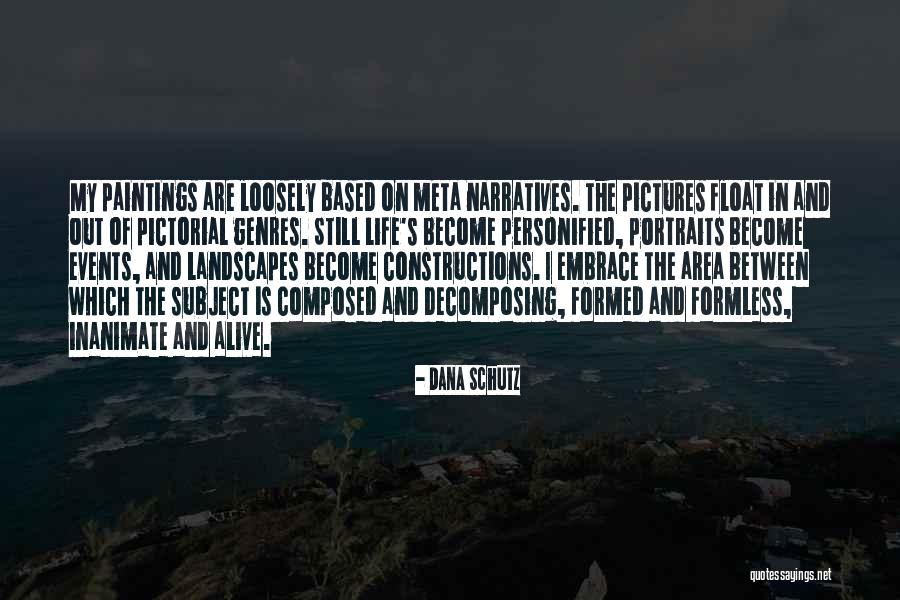
My paintings are loosely based on meta narratives. The pictures float in and out of pictorial genres. Still life's become personified, portraits become events, and landscapes become constructions. I embrace the area between which the subject is composed and decomposing, formed and formless, inanimate and alive. — Dana Schutz
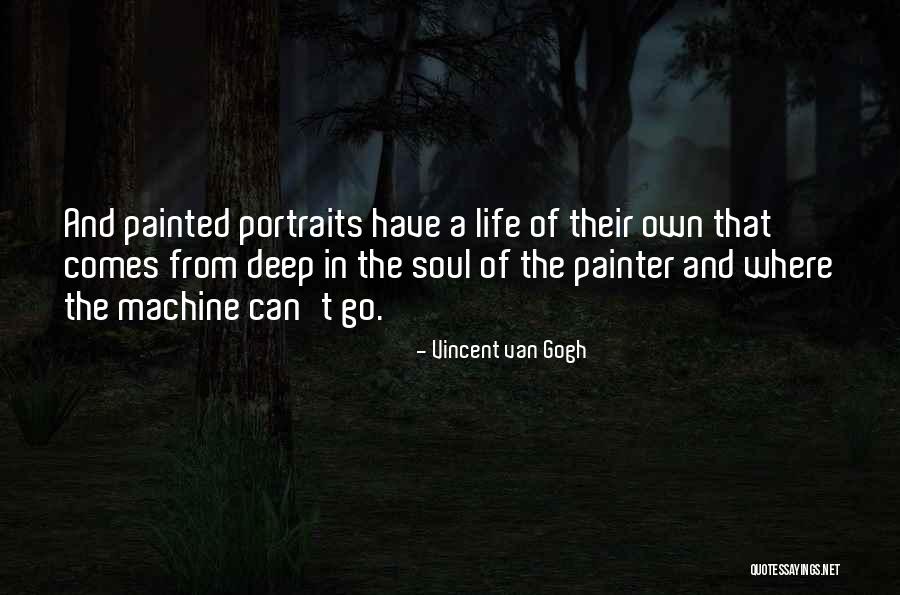
And painted portraits have a life of their own that comes from deep in the soul of the painter and where the machine can't go. — Vincent Van Gogh

Life is a series of family photos in which you keep moving to the rear until finally you're a portrait in the background. — Robert Breault

I find it really fascinating that while in an attempt to look beautiful we tend to go for what's easily acceptable.
But when it comes to portraits, it is only our facial flaws that make that picture worth its while, setting it apart.
Isn't it amazing to find that beauty is something that makes us alike? While our flaws are the real contributors to our uniqueness. — Mansi Laus Deo

Oh Beck, I love reading your e-mail. Learning your life. And I am careful; I always mark new messages unread so that you won't get alarmed. My good fortune doesn't stop there; You prefer e-mail. You don't like texting. So this means that I am not missing out on all that much communication. You wrote an "essay" for some blog in which you stated that "e-mails last forever. You can search for any word at any time and see everything you ever said to anyone about that one word. Texts go away." I love you for wanting a record. I love your records for being so accessible and I'm so full of you, your calendar of caloric intake and hookups and menstrual moments, your self-portraits you don't publish, your recipes and exercises. You will know me soon too, I promise. — Caroline Kepnes

In Isaac Newton's lifetime, no more than a few thousand people had any idea what he looked like, though he was one of England's most famous men, yet now millions of people have quite a clear idea - based on replicas of copies of rather poorly painted portraits. Even more pervasive and indelible are the smile of Mona Lisa, The Scream of Edvard Munch, and the silhouettes of various fictional extraterrestrials. These are memes, living a life of their own, independent of any physical reality. "This may not be what George Washington looked like then," a tour guide was overheard saying of the Gilbert Stuart painting at the Metropolitan Museum of Art, "but this is what he looks like now." Exactly. — James Gleick





